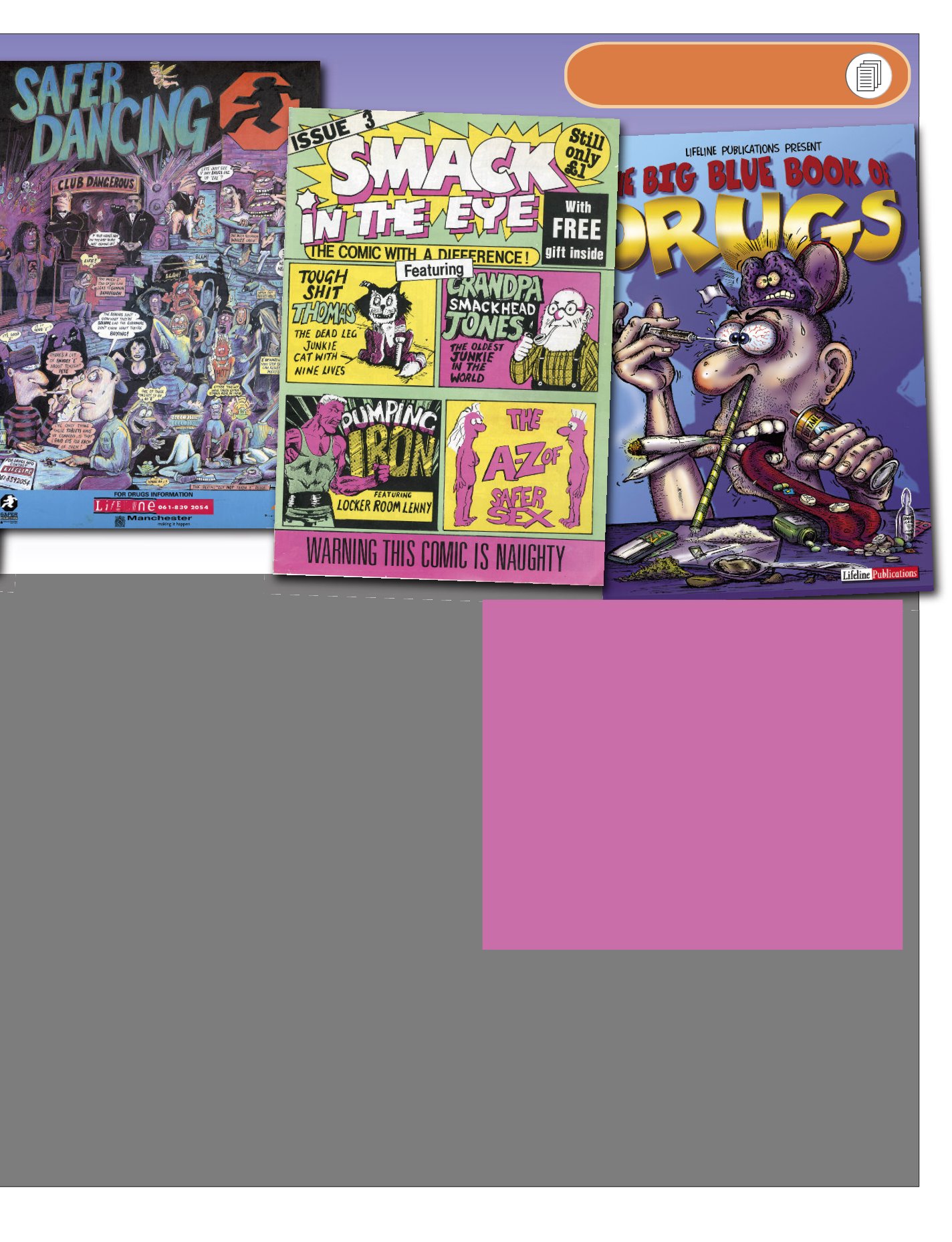
drug users writing about drugs going back to Thomas De Quincey, it still raised a
few eyebrows when in the early 1990s we commissioned a drug user to write about
drugs.
McDermott’s Guides
were designed to be credible and entertaining enough
for experienced users to want to pick them up and read them.
However, it was often the pictures that got us into more trouble than the words.
An example of this is
On the Beat
, a booklet based on research with female street
sex workers. The ‘sexy’ and ‘glamorous’ images of the women caused some
controversy, but that is the way the women we spoke to wanted to be represented,
so that is how I drew them.
A
s the new millennium dawned I was managing a research and
communications project on homeless populations of injectors. The
project had initially been going well and had led to an overdose
leaflet, involving police and ambulance services in a joint overdose
protocol. The police would now only be called if there was a death or
an under-16 involved.
It was when we tried to do something about this unhygienic places where the
homeless population were injecting that the project ran into a bit of trouble. We
produced an injection box designed as a ‘safe space’ and filled this with all the
injection equipment needed for a day – an initiative that led to us being threatened
with arrest under section 9a of the Misuse of Drugs Act.
By the end of the project we were under siege, and still under threat of arrest
when the Home Affairs Select Committee (HASC) report came out. The Committee
(including future prime minister David Cameron) had visited and taken me to
dinner to talk about the work. But when the report came out, our publications were
accused of ‘crossing a line’ and promoting drug use. This led to the government
trying (illegally) to stop anybody buying them with public money: we were under
investigation by the Charity Commission and the National Lottery; we had
complaints from Prison Officers Association sent to the Prime Minister’s Office and
were under attack by the entire national right wing press. The
Daily Mail
(bless!)
called us ‘groovy right-on activists’.
The box was never put out, but the subsequent furore and media storm created
by us refusing to kowtow led to the Misuse of Drugs Act being amended to allow
for the wider provision of injection equipment at needle exchanges. We survived
the onslaught and had the most financially successful sales year in our history.
The work in the archive was produced for a national drugs charity, through
setting up a publications department that survived for nearly 30 years just from
sales of the publications. That we did this by producing such uncompromising and
challenging works is (I think) quite remarkable.
Although many of the publications in the archive rely on the use of humour, I
always took the work seriously. I never assumed that information alone would lead to
behaviour change and never attempted to tell people that they shouldn’t use drugs, as
I never believed this would prevent anybody from using them. The work was first and
foremost an attempt to communicate with the target audience of drug users and to
show them as people, with all the strengths and weaknesses that make us all human.
Enjoy, but be warned – many of the publications in the archive are still as
gloriously rude, vulgar and likely to offend as when they were first created.
Hot off the press!
Biffo the clown’s guide to the PSA
is now available in the ‘new
work’ section at
For the stories behind the news
April 2016 |
drinkanddrugsnews
| 9
‘It was called “grossly
offensive and pornographic”
and accused of just about
every “ism” and “obia” at
the time. Not only did it
contain explicit information...
it critiqued the drugs field.’


